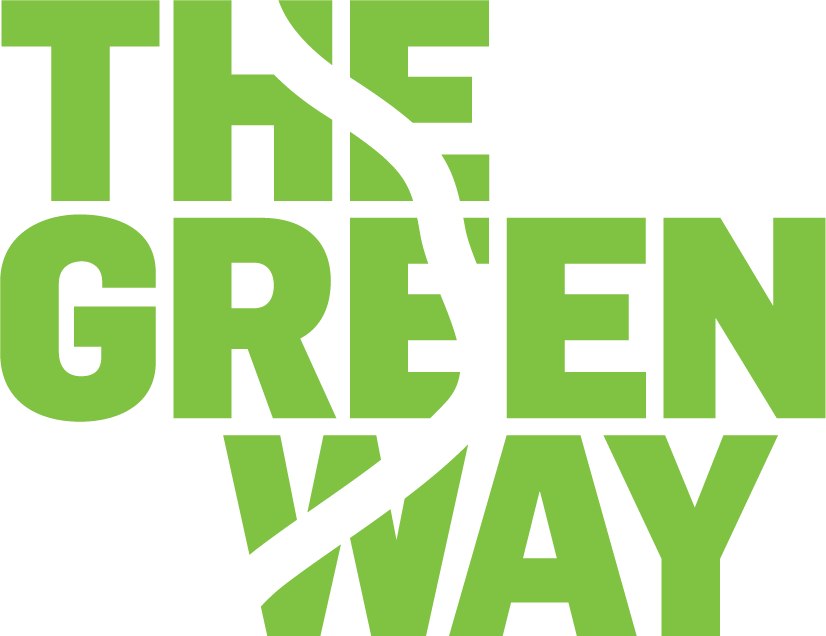Oil-based enamels
September 2024 – August 2026
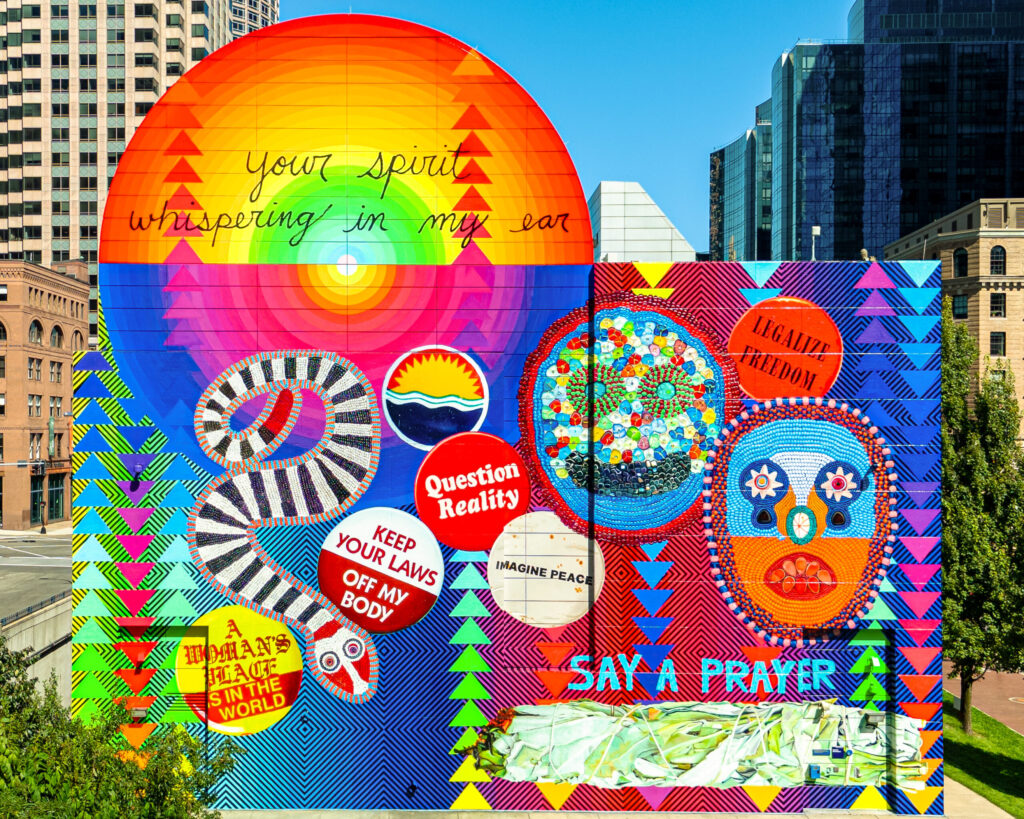
A Statement from the Artist:
“Your spirit whispering in my ear” are words that I wrote earlier this year as I thought about the challenges that my ancestors, and others, have endured during their lifetimes and how they met those difficulties with faith, courage and strength.
I often say the phrase “SAY A PRAYER” casually when I am about to do something that matters to me. It is a simple way to call upon good energy and protection from those who have come before me. I am not only speaking to my ancestors but also to artists, past and present activists, the planet, the universe, and to all living things surrounding us.
The colorful patterns reflect the rising and setting of the sun, the vibrations of energy all around us, they point to what is above us and also to what is below the ground underneath our feet. The faces are representations of two of these spirits while acknowledging that there are an infinite number of spirits witnessing our current world. The pins are from my personal collection of memorabilia from different social and political equity movements that reflect one’s right to make choices regarding our own bodies, feminist movements, the pursuit of peace, the definition of freedom, environmentalism, and the questioning of how we define what is real or not. Finally, the snake is an image that I have been including in my work over the past few years to symbolize rebirth and transformation, as a reminder that time continues on and that there will be a time after this particular moment has passed.”
-Jeffrey Gibson, May 2024
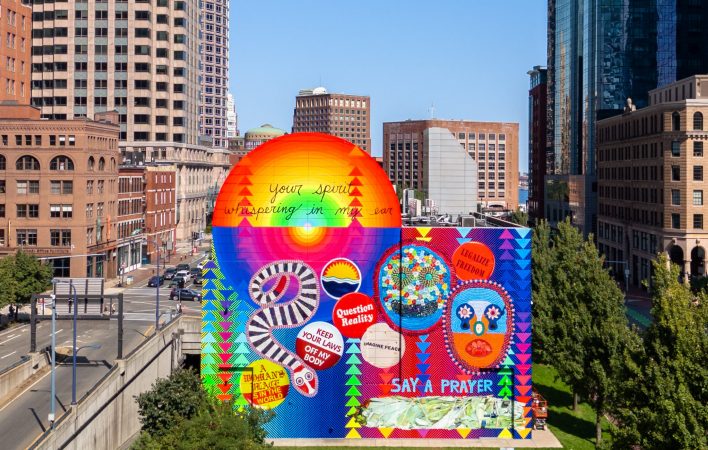
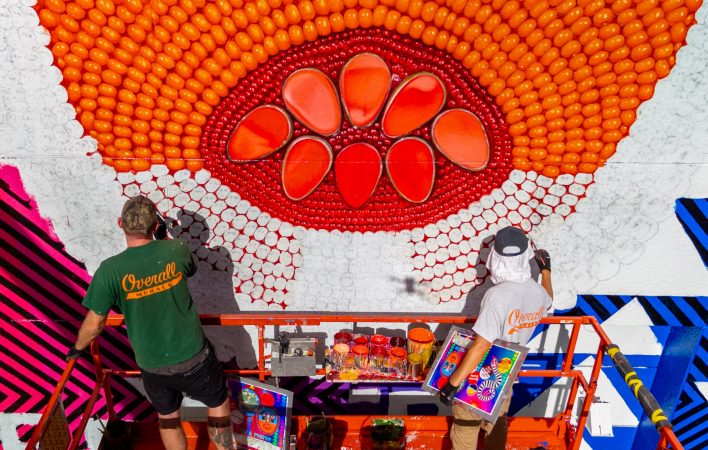
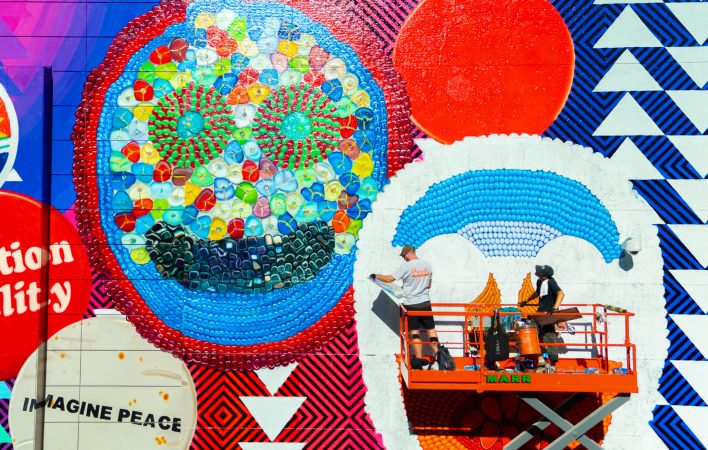
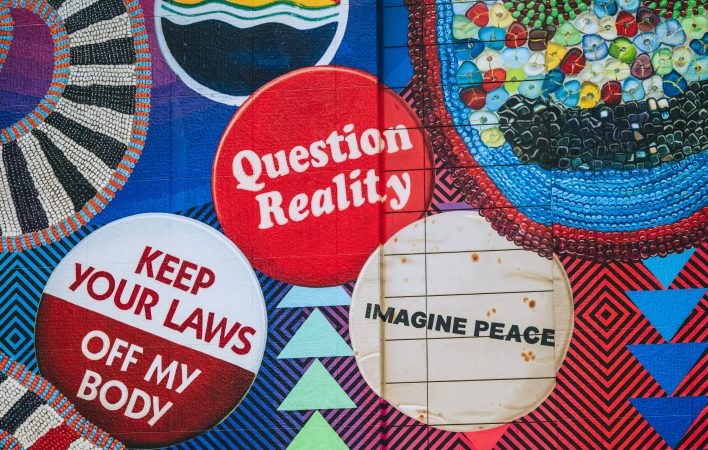
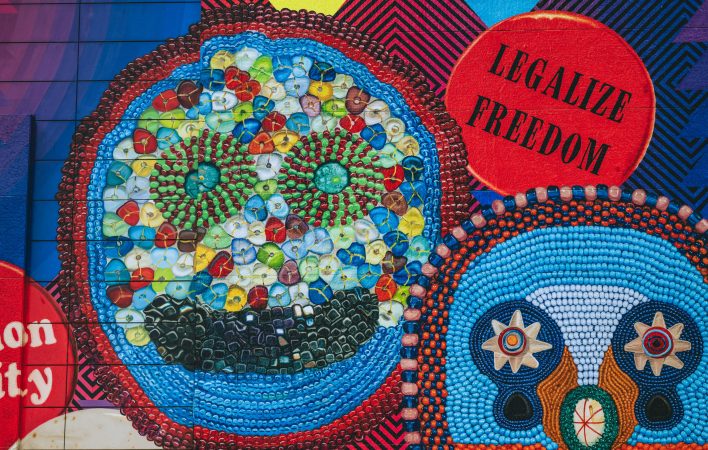
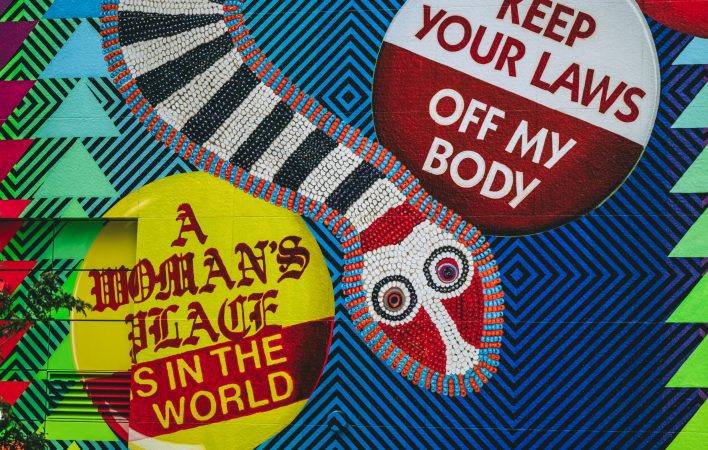
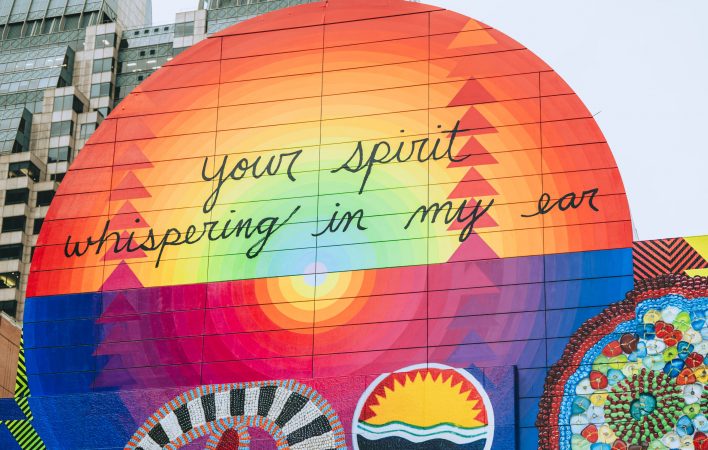


Photos 3-6 by Osemwenkhae Studios (@simplyoutstanding)
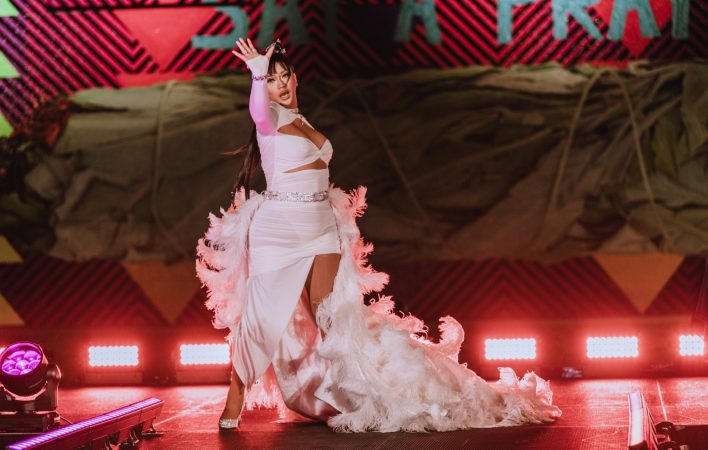
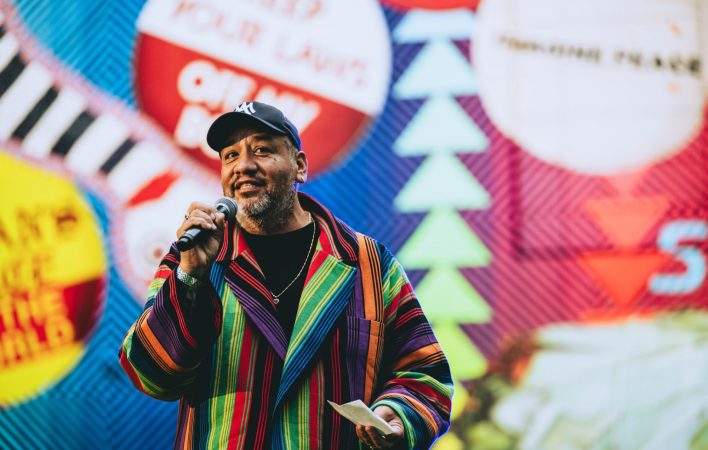
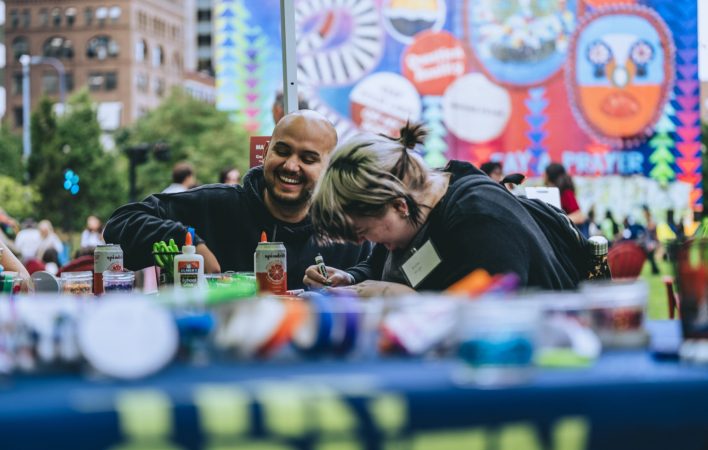

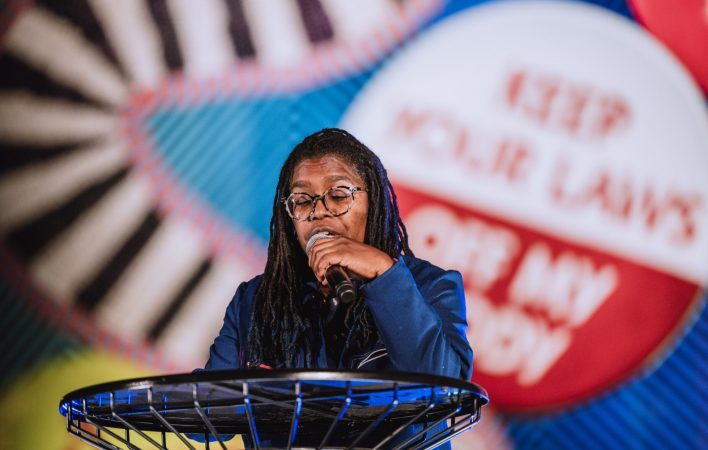
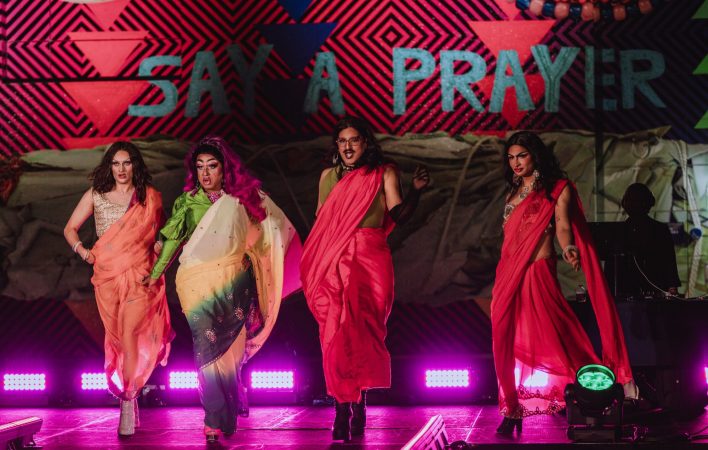
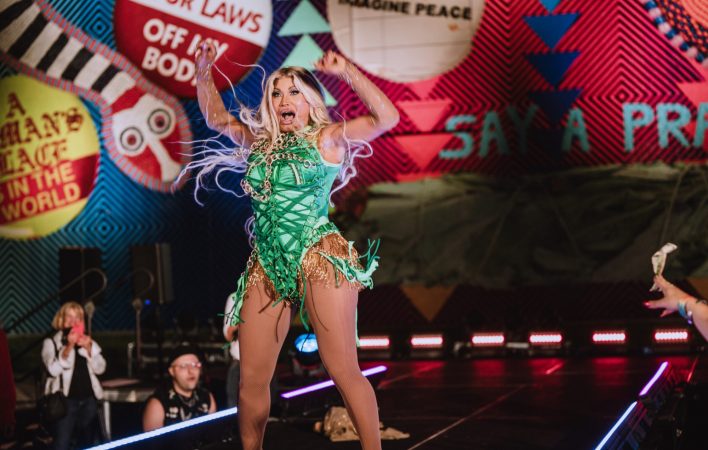
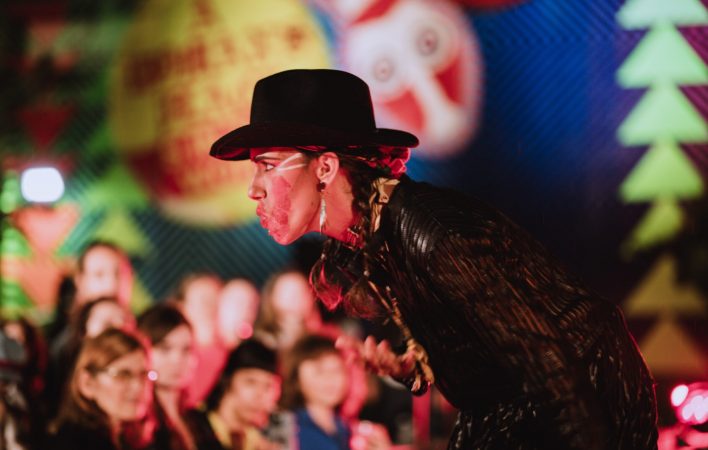
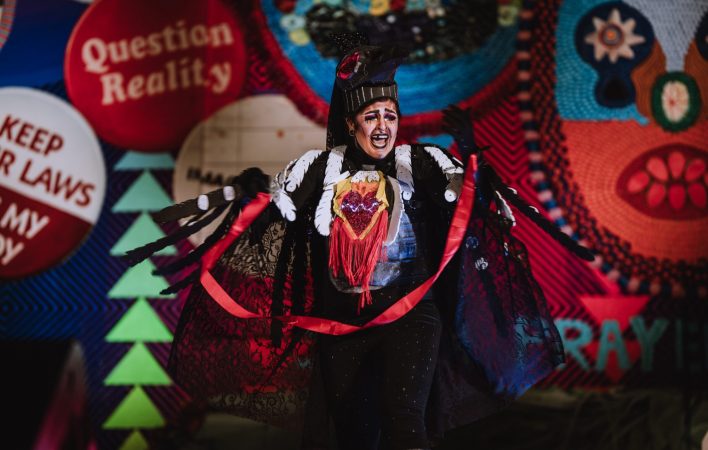
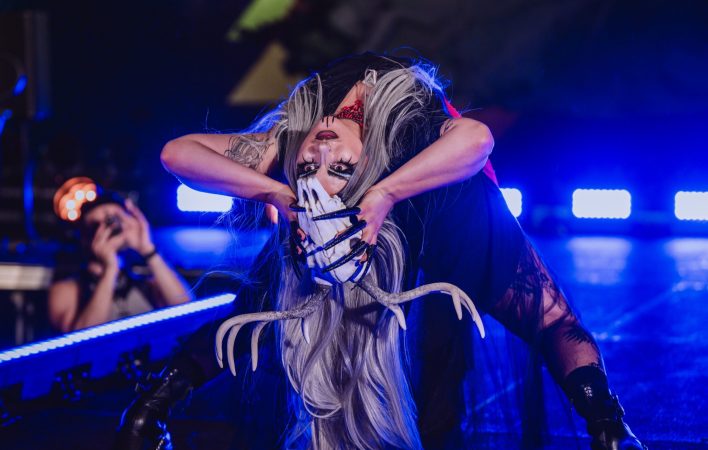
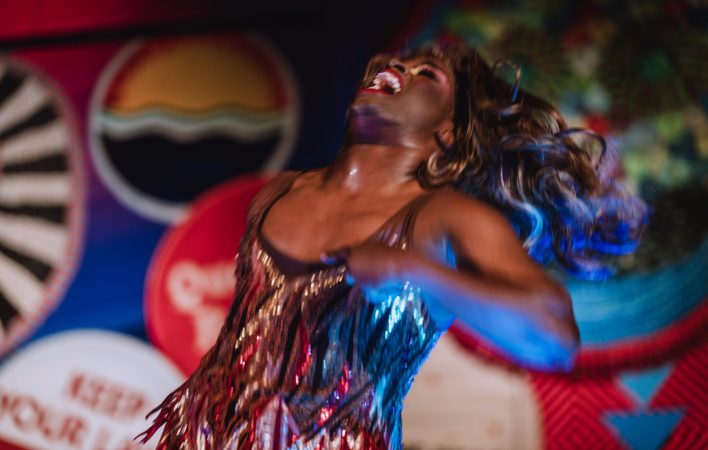


Photos taken by Osemwenkhae Studios (@simplyoutstanding) on September 19 2024 at the your spirit whispering in my ear opening celebration on The Greenway.
Mural Elements & Context
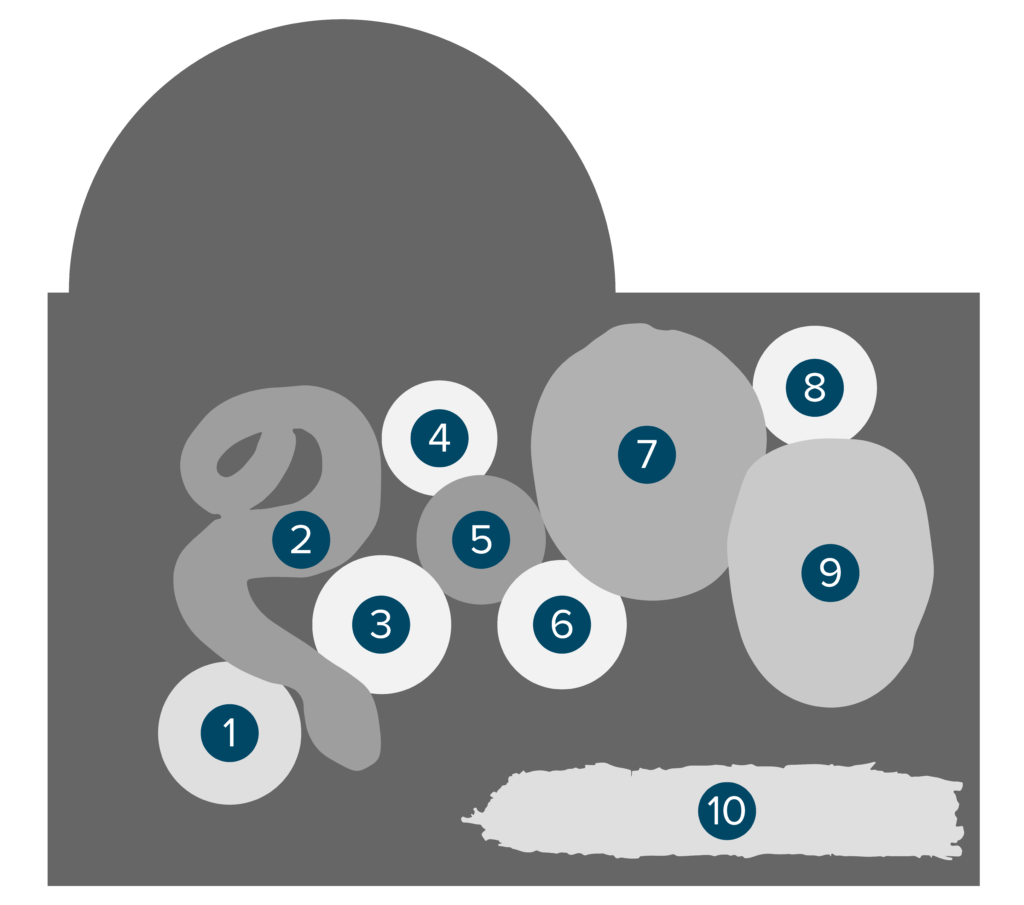
1. A Woman’s Place is in The World Button
Subverting the 19th-century phrase “A woman’s place is in the home,” this button emphasizes women’s right to self-actualization.
2. Beaded Snake
The snake represents rebirth and transformation, and has been used as a symbol of strength, creativity and continuity for thousands of years across many societies.
3. Keep Your Laws Off My Body Button
This phrase was coined during the 1969 feminist struggle for reproductive rights, as an offshoot of the original “My Body, My Choice” slogan. Here, this language can also be interpreted broadly as a reflection of people’s right to make choices regarding their own bodies.
4. Earth Day Button
This button was designed by David Powell to celebrate the first Earth Day on April 22, 1970, which began as a student-organized movement for environmental concerns, including pollution, oil spills, and climate change.
5. Question Reality Button
This button is featured in Gibson’s 2020 work, Chief Pretty Eagle. Chief Pretty Eagle was a Crow Nation war chief, diplomat, and Indigenous land rights activist (c. 1846-1903, Montana).
6. Imagine Peace Button
This button references John Lennon and Yoko Ono’s iconic song Imagine, a well-known contribution of their anti-war activism during the 1960s and 70s. Its presence here also connects to Boston’s anti-Vietnam War protest on October 15, 1969, the largest in New England’s history with over 100,000 attendees.
7. Beaded Mask #1
This beaded figure can be found in Gibson’s previous work, They Play Endlessly, 2021, and incorporates traditional and global materials including beads made of plastic, glass, turquoise, and crystal, along with metal sequins.
8. Legalize Freedom Button
A spin-off of the ongoing “Legalize It” movement to decriminalize marijuana, this phrase has been broadly used by other communities and political groups to garner support for various sociopolitical issues from gay marriage to free-market economics.
9. Beaded Mask #2
This beaded figure can be found in Gibson’s previous work, IN TIME YOU’LL BE FINE, 2021, and incorporates glass beads and druzy crystal.
10. Burning Sage
Smudging, or the practice of burning sage, is a ceremony performed in many Indigenous and Native cultures to purify and cleanse the mind, body, spirit, and places of negative energy. The practice contains four elements: the sacred plants of cedar, sage, sweetgrass, and tobacco, which represent gifts from Mother Earth, the shell that wraps and contains the plants, which represent water, the flame that lights the sacred plants, which represents fire, and the smoke produced from the fire, which represents air.
Location:
About the Artist
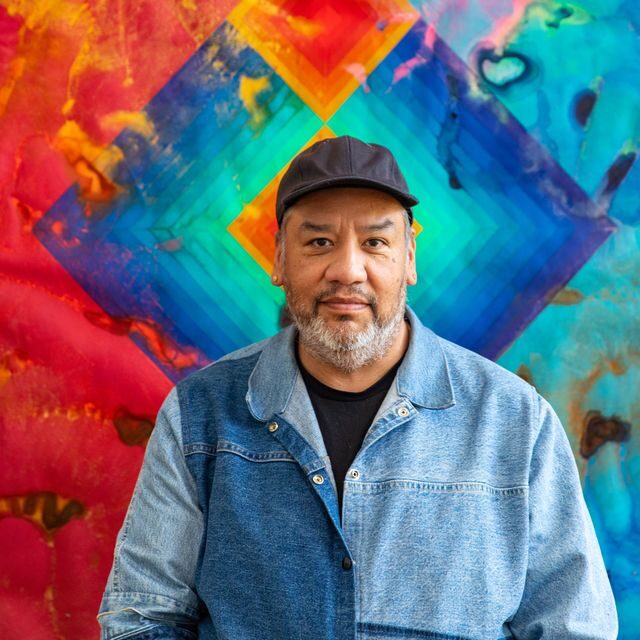
Jeffrey Gibson (b. 1972, Colorado Springs, CO; lives and works in New York) grew up in major urban centers in the United States, Germany, Korea, and the U.K. A mid-career multidisciplinary artist, he is a citizen of the Mississippi Band of Choctaw Indians and half Cherokee, whose practice includes sculpture, painting, printmaking, video, and performance. Gibson earned his Master of Arts in painting at the Royal College of Art, London, in 1998 and his Bachelor of Fine Arts in painting from the School of the Art Institute of Chicago in 1995. His work is in the permanent collections of the Denver Art Museum; Museum of Fine Arts, Boston; Smithsonian Institution’s National Museum of the American Indian; National Gallery of Canada; Crystal Bridges Museum of American Art; the Museum of Modern Art; and the Whitney Museum of American Art. Gibson is a past TED Foundation Fellow and a Joan Mitchell Grant recipient. He is a recipient of the 2019 MacArthur Foundation Fellowship. He is currently an artist-in-residence at Bard College and lives and works near Hudson, New York. In 2024, Gibson represented the United States at the 60th edition of La Biennale di Venezia. He is the first Indigenous artist to represent the United States with a solo presentation in the national pavilion.
In Partnership with MASS MoCA
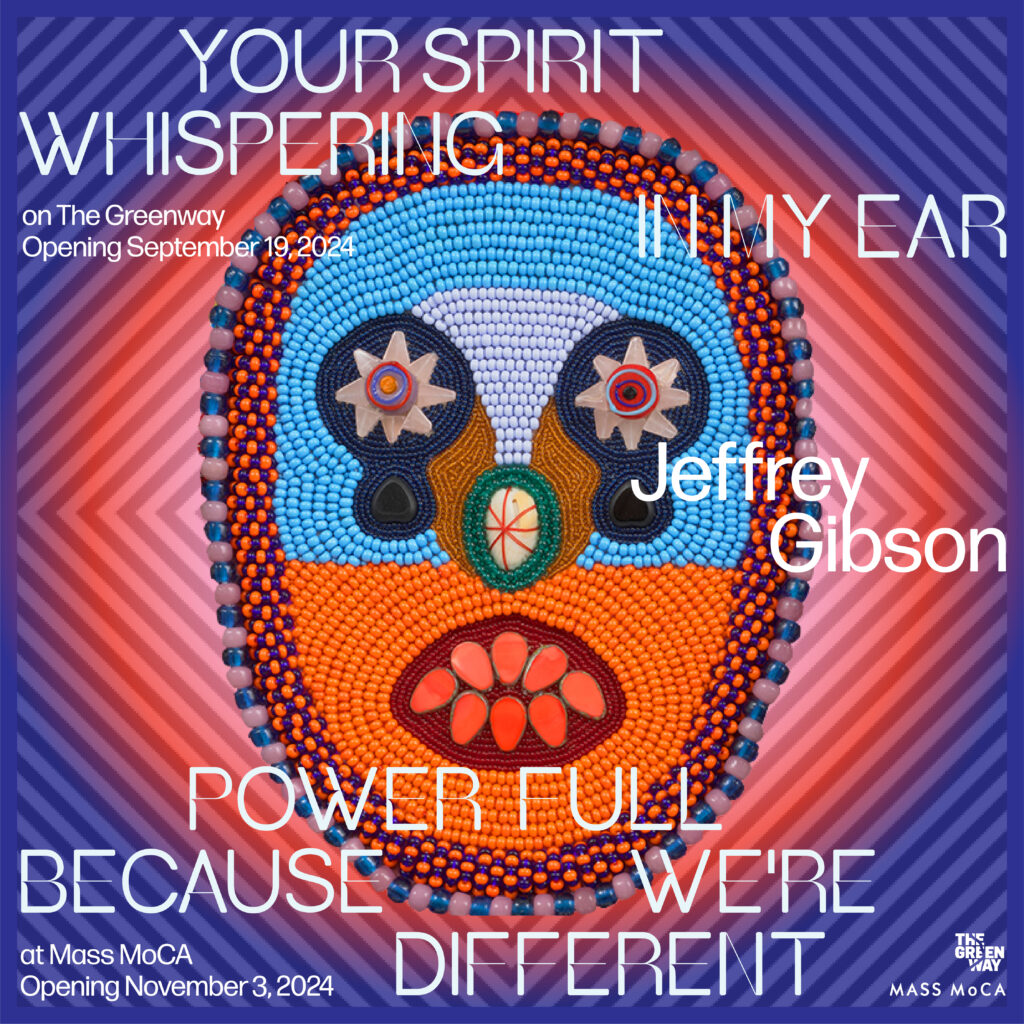
A Special Thank You to Our Supporters
Project support for your spirit whispering in my ear is provided by Bob and Doris Gordon.
Public Art on The Greenway is made possible with major support from the Barr Foundation, Goulston & Storrs, the Greenway Business Improvement District, the Mabel Louise Riley Foundation, Meet Boston, the National Endowment for the Arts, and the Wagner Foundation.
Additional support is provided by the Deborah Munroe Noonan Memorial Fund, Bank of America, N.A., Trustee.
Special thanks to our collaborators The Dagny Boston, Marr Lifts, and Yotel and to our in-kind media sponsor WBUR.
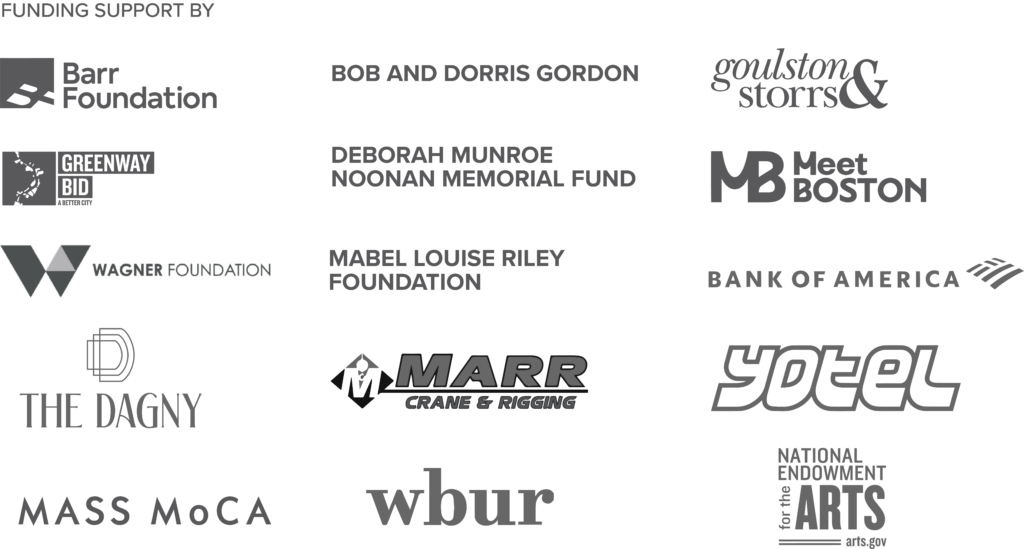
About The Greenway and the Conservancy
The Greenway is a contemporary public park in the heart of Boston. The Greenway welcomes millions of visitors annually to gather, play, unwind, and explore. The Greenway Conservancy is the non-profit responsible for the management and care of The Greenway. The majority of the public park’s annual budget is generously provided by private sources.
The Greenway Conservancy’s Public Art Program brings innovative and contemporary art to Boston through free exhibitions that engage people in meaningful experiences and dialogue with art, each other, and the most pressing issues of our time. Past Greenway exhibitions can be viewed on the Conservancy’s website.
